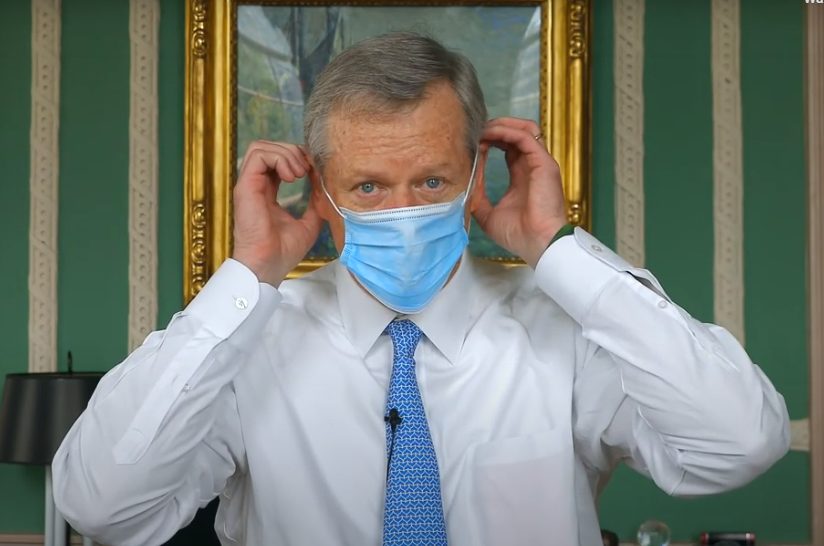The following is a press release from the Governor’s office submitted to SOURCE media
***
[broadstreet zone=”51611″]
[broadstreet zone=”80100″]
BOSTON – The Baker-Polito Administration provided an update today, October 12, on a series of initiatives that will keep supporting the residents of the Commonwealth to stop the spread of COVID-19, and ensure the state’s readiness status heading into the fall and winter.
Led by the COVID-19 Command Center, the Administration outlined today inter-departmental programs that have been built or expanded since the start of the pandemic in March, all of which strengthen the Commonwealth’s ability and capacity to respond if COVID cases in Massachusetts increase. This includes:
- One of the most robust testing networks in the nation
- A first-in-class contact tracing network
- Investments and strengthened initiatives to provide appropriate care for older adults and staff at long-term care facilities (LTCF)
- Hospital preparedness plans
- PPE stockpile investments
- Health and Safety requirements to protect teachers and students as schools re-open
- A cautious phased approach to resume business activity.
[broadstreet zone=”59948″]
Testing
Since the start of the pandemic, approximately 4.8 million tests have been administered to more than 2.4 million residents in Massachusetts. Growing steadily from approximately 2,000 tests per day in March to about 13,000 a day in May, today approximately 65,000 tests are administered every day.
A key driver in this success has been the Stop the Spread initiative, which has sites in 18 of the highest-risk communities. The Administration announced today the Stop the Spread initiative has been extended through December.
As part of its readiness, the state now has the in-state lab capacity to process more than 100,000 tests per day if demand warrants. This level of testing, which has an average turnaround time of 1.8 days, is part of a strong readiness foundation to identify COVID, stop the spread and inform policy through data analysis.
Contact Tracing
In April, responding quickly to the increasing number of cases, the Commonwealth established the Contact Tracing Collaborative (CTC), a collaboration between the Massachusetts Department of Public Health, local boards of health and Partners in Health.
Today, this network includes just under 2,000 workers who maintain regular connection with and support for individuals who are isolated in quarantine.
A team of epidemiologists was recently added to CTC to investigate cases, identify the source of transmission and catch clusters early. To date, more than 100,000 people have been contacted.
[broadstreet zone=”70106″][broadstreet zone=”70107″]
Hospital Readiness
Today, hospitals are required to continue adherence to the policies put in place upon reopening to ensure continued readiness, including inventories of PPE, ICU nursing staffing ratios and strict policies to ensure sufficient inpatient capacity. Massachusetts hospitals have approximately 50 percent ICU capacity available, plus additional beds can be made available by converting medical or surgical beds through established and proven procedures. Further, temporary spaces can be utilized again. In the spring, the state set up 5 alternative medical sites. MEMA is prepared to rapidly reinstate these if necessary.
LTCF Readiness
Caring for older adults in LTCF has been a priority since the earliest days of the pandemic. Early on, the state provided approximately 2.8 million pieces of PPE to nursing homes and opened dedicated COVID isolation spaces and facilities to safely cohort and protect residents and staff and help stop the spread. An additional measure to protect staff and residents, the state implemented a surveillance testing program ahead of federal guidance. From July 1 to October 8, approximately 280,000 state financed tests for residents and staff have occurred. The Commonwealth has retained clinical rapid response teams if severe staffing shortages occur. The latest set of reforms, which include more than $400 million in new funding for infection control and staffing, build on the legislatively authorized Long Term Care Facility Commission’s report.
[broadstreet zone=”58892″]
PPE Stockpile
In the early days of the pandemic, the global supply chain struggled to deliver critical PPE. Massachusetts pursued every piece of this important protective measure and partnered with local manufacturers, which pivoted operations to support essential workers in a time of need.
The Commonwealth has added millions of pieces of PPE to the state stockpile over the last several months with sufficient material to support medical institutions if their supplies run low through 2021.
In addition to masks, gowns, gloves and other PPE, the stockpile includes approximately 1,200 ventilators, almost double the number on-hand in the spring. For perspective, the peak number of ICU patients was 1,085 in April.

K-12
After extensive consultation with infectious disease physicians and pediatricians, the Department of Elementary and Secondary Education provided districts with detailed guidance on how to develop plans for safely delivering in-person instruction. The guidance was endorsed by the Massachusetts Chapter of the American Academy of Pediatrics. The Department of Public Health (DPH) developed town-by-town health metrics to guide school districts on whether to be fully in-person, hybrid, or remote, based on three weeks of community-wide data. DPH has also made available rapid-response mobile testing for any school that experiences a COVID cluster.
To help districts bring their children back to school, the Governor allocated nearly $1 billion to municipalities and school districts, through formula distributions of COVID Relief Funds and targeted grants, providing students with access to computers and connectivity. In collaboration with legislative leaders, the Administration has committed to increasing Chapter 70 school aid, adjusting for inflation and enrollment, to ensure stable funding even in this very challenging economic and fiscal climate.
[broadstreet zone=”59946″]

